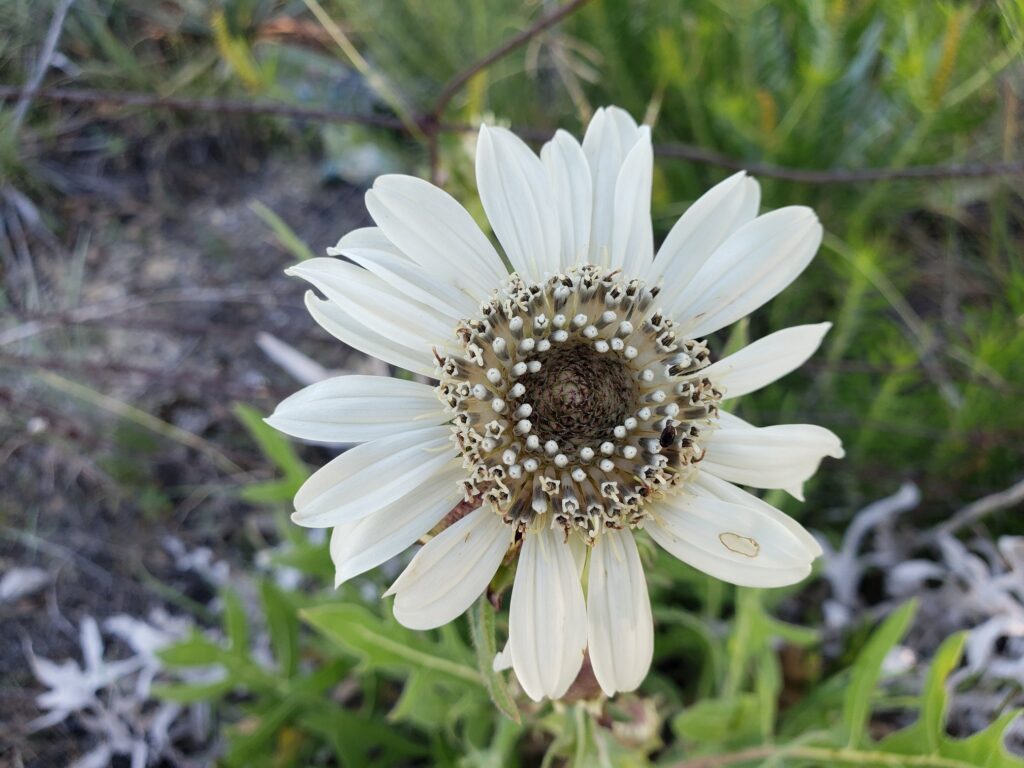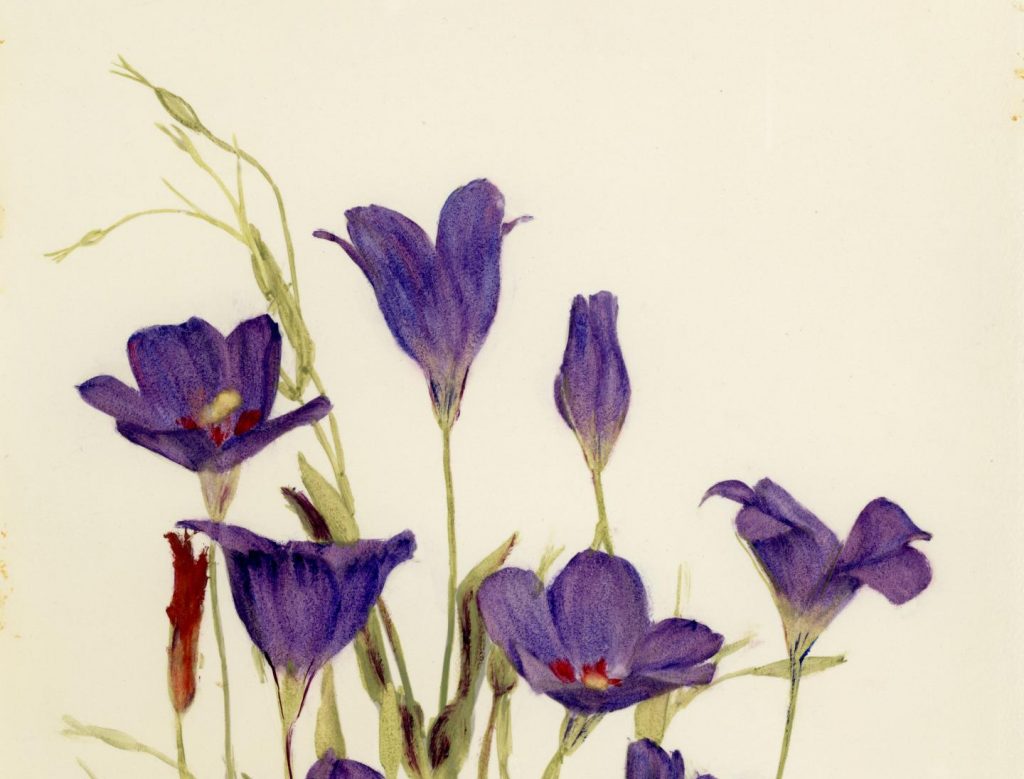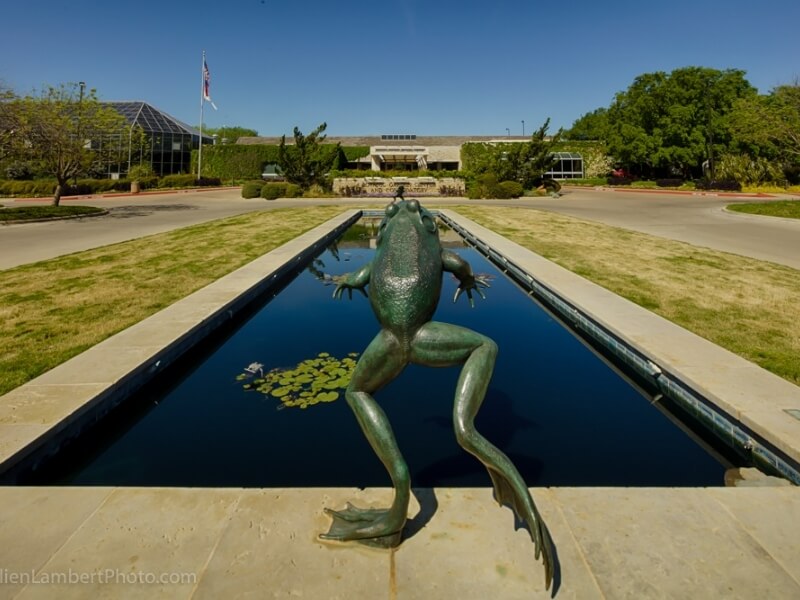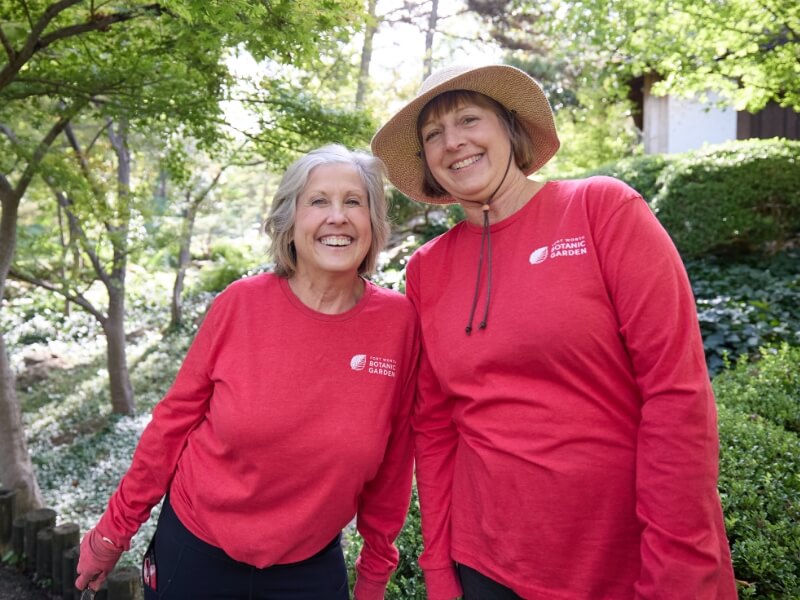Digitizing Specimens of the Balcones Canyonlands National Wildlife Refuge
Imagine standing quietly at a lookout in the hill country of central Texas as the sun begins to set. Oak and Juniper trees blanket the hills as far as the eye can see. Muted sounds of nature bring a soothing respite to an otherwise busy day. Your peacefulness is suddenly disturbed by loud noises. Slowly, a construction vehicle drives through the scenery, flattening the foliage to make way for a new development. The vista you enjoyed for a moment is lost forever to progress. Birds and other wildlife that once called this hilltop home for generations upon generations have now fled in search of a new breeding ground if one is to be found.
While we make way for new homes and businesses, we often don’t notice the loss of the diminutive songs of birds, the insects they consider food, or the unique plants found only in this part of Texas. Thanks to some forward-thinking folks, the establishment of a refuge in 1992 stopped the encroaching progress.
The Balcones Canyonlands National Wildlife Refuge is a breathtaking vista of over 25,000 acres in the Texas Hill Country, located approximately 40 miles northwest of Austin at the juncture of Travis, Burnet, and Williamson Counties. It provides an indefinite safe haven for nesting songbirds like the endangered Golden-cheeked Warbler and the once threatened Black-capped Vireo, which depend on specialized habitats for breeding.
Dr. Chuck Sexton, a retired Wildlife Biologist with the U.S. Fish and Wildlife Service, became involved early on during the formation of the Refuge. He was instrumental in advising conservation partners about the most biologically important tracts to protect for the songbirds. While surveying for birds, he also collected and identified over 800 unique plant species. The specimens are now preserved to document the rich and diverse flora of the area, several of which are endemic, or found only in this area of Central Texas.

In addition to Dr. Sexton, several biologists and volunteers also assisted collecting the plants that now make up the Herbarium of the Balcones Canyonlands National Wildlife Refuge.
Eddie Hertz, a long-time volunteer at the Refuge and later a Biological Technician, had a sharp eye for plant discoveries, particularly prairie grasses. He worked tirelessly to enhance the diversity of native plants, particularly prairie species, at Doeskin Ranch and elsewhere on the Refuge.
Bill Reiner Jr., also a Biological Technician, focused on detecting and controlling oak wilt, but was also very keen on documenting plant diversity on the Refuge. Bill now works for the City of Austin on the Balcones Canyonlands Preserves.
John Kelly, a volunteer and avid birdwatcher from Travis County Audubon also added many species of plants to the Refuge list in the early years.

In addition to Dr. Sexton, several biologists and volunteers also assisted collecting the plants that now make up the Herbarium of the Balcones Canyonlands National Wildlife Refuge.
Eddie Hertz, a long-time volunteer at the Refuge and later a Biological Technician, had a sharp eye for plant discoveries, particularly prairie grasses. He worked tirelessly to enhance the diversity of native plants, particularly prairie species, at Doeskin Ranch and elsewhere on the Refuge.
Bill Reiner Jr., also a Biological Technician, focused on detecting and controlling oak wilt, but was also very keen on documenting plant diversity on the Refuge. Bill now works for the City of Austin on the Balcones Canyonlands Preserves.
John Kelly, a volunteer and avid birdwatcher from Travis County Audubon also added many species of plants to the Refuge list in the early years.


In April 2005 Dr. Sexton came across a very tiny finger-tip sized flower named One-flowered Cancer-Root (Aphyllon uniflorum; Orobanchaceae). It could have easily been overlooked with single flowers barely 2″ to 4″ high and usually hidden in dense grass. He located a few small populations on Doeskin Ranch tract, Burnet County, which are disjunct and constitute the westernmost range for the species.


A well-documented population of Eastern Shooting Star (Primula meadia; Primulaceae) was originally found at Doeskin Ranch (Burnet County) by volunteer John Kelly, and is the westernmost for the species. This and a few other small populations in the Austin area are far disjunct from the species’ primary range.


In April 2005 Dr. Sexton came across a very tiny finger-tip sized flower named One-flowered Cancer-Root (Aphyllon uniflorum; Orobanchaceae). It could have easily been overlooked with single flowers barely 2″ to 4″ high and usually hidden in dense grass. He located a few small populations on Doeskin Ranch tract, Burnet County, which are disjunct and constitute the westernmost range for the species.


A well-documented population of Eastern Shooting Star (Primula meadia; Primulaceae) was originally found at Doeskin Ranch (Burnet County) by volunteer John Kelly, and is the westernmost for the species. This and a few other small populations in the Austin area are far disjunct from the species’ primary range.


In April 2005 Dr. Sexton came across a very tiny finger-tip sized flower named One-flowered Cancer-Root (Aphyllon uniflorum; Orobanchaceae). It could have easily been overlooked with single flowers barely 2″ to 4″ high and usually hidden in dense grass. He located a few small populations on Doeskin Ranch tract, Burnet County, which are disjunct and constitute the westernmost range for the species.


A well-documented population of Eastern Shooting Star (Primula meadia; Primulaceae) was originally found at Doeskin Ranch (Burnet County) by volunteer John Kelly, and is the westernmost for the species. This and a few other small populations in the Austin area are far disjunct from the species’ primary range.


In April 2005 Dr. Sexton came across a very tiny finger-tip sized flower named One-flowered Cancer-Root (Aphyllon uniflorum; Orobanchaceae). It could have easily been overlooked with single flowers barely 2″ to 4″ high and usually hidden in dense grass. He located a few small populations on Doeskin Ranch tract, Burnet County, which are disjunct and constitute the westernmost range for the species.


A well-documented population of Eastern Shooting Star (Primula meadia; Primulaceae) was originally found at Doeskin Ranch (Burnet County) by volunteer John Kelly, and is the westernmost for the species. This and a few other small populations in the Austin area are far disjunct from the species’ primary range.


In April 2005 Dr. Sexton came across a very tiny finger-tip sized flower named One-flowered Cancer-Root (Aphyllon uniflorum; Orobanchaceae). It could have easily been overlooked with single flowers barely 2″ to 4″ high and usually hidden in dense grass. He located a few small populations on Doeskin Ranch tract, Burnet County, which are disjunct and constitute the westernmost range for the species.


A well-documented population of Eastern Shooting Star (Primula meadia; Primulaceae) was originally found at Doeskin Ranch (Burnet County) by volunteer John Kelly, and is the westernmost for the species. This and a few other small populations in the Austin area are far disjunct from the species’ primary range.


In April 2005 Dr. Sexton came across a very tiny finger-tip sized flower named One-flowered Cancer-Root (Aphyllon uniflorum; Orobanchaceae). It could have easily been overlooked with single flowers barely 2″ to 4″ high and usually hidden in dense grass. He located a few small populations on Doeskin Ranch tract, Burnet County, which are disjunct and constitute the westernmost range for the species.


A well-documented population of Eastern Shooting Star (Primula meadia; Primulaceae) was originally found at Doeskin Ranch (Burnet County) by volunteer John Kelly, and is the westernmost for the species. This and a few other small populations in the Austin area are far disjunct from the species’ primary range.


In April 2005 Dr. Sexton came across a very tiny finger-tip sized flower named One-flowered Cancer-Root (Aphyllon uniflorum; Orobanchaceae). It could have easily been overlooked with single flowers barely 2″ to 4″ high and usually hidden in dense grass. He located a few small populations on Doeskin Ranch tract, Burnet County, which are disjunct and constitute the westernmost range for the species.


A well-documented population of Eastern Shooting Star (Primula meadia; Primulaceae) was originally found at Doeskin Ranch (Burnet County) by volunteer John Kelly, and is the westernmost for the species. This and a few other small populations in the Austin area are far disjunct from the species’ primary range.


In addition to Dr. Sexton, several other people collaborated as conservation partners to protect the Refuge. The Botanical Research Institute of Texas is pleased to join in partnership with Balcones Canyonlands National Wildlife Refuge to digitize the botanical collections made by Dr. Sexton and his associates. In addition to providing protected wildlife habitat, the Refuge provides for public use including hiking, wildlife observation, bird watching, photography, hunting and environmental education. More information can be found by visiting their website at https://www.fws.gov/refuge/balcones-canyonlands. Funding is provided through the National Science Foundation TCN grant award #1902078. You can read more information and updates on this grant here.





